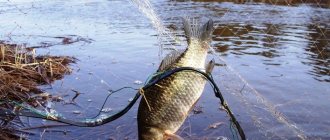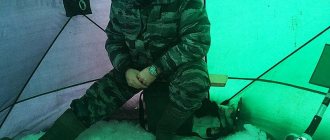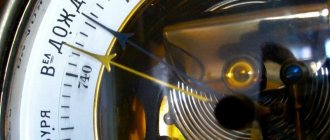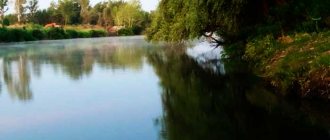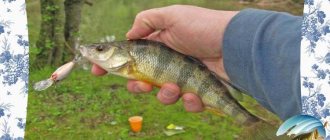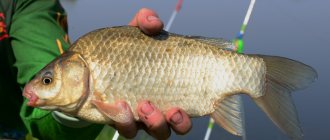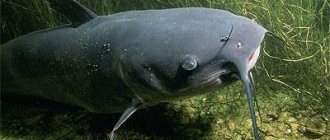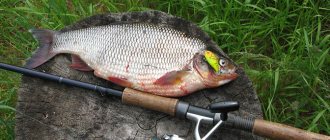Late summer is a great time for fishing. Cool August nights make underwater inhabitants think that there is not much left before winter, which means it’s time to start storing fat. It is in the last month of summer that most fish species become active. Pike perch is no exception.
While it was hot, this predator hid from it in shelters, choosing places with clean water and a hard bottom. It only came out to feed for a short time, exclusively in the morning hours; a longer bite could only be counted on on cloudy days. But as autumn approaches, the situation changes. Fishing for pike perch in August takes on a completely different character and often rewards the dedicated fisherman with excellent trophies.
Where to look for pike perch in late summer
Until about mid-August, the locations and behavior of pike perch remain almost unchanged compared to the previous month, although this largely depends on weather conditions. In other years, summer ends earlier than we would like. According to the calendar, it should still be hot, but it’s already autumn weather outside. It’s good that nature presents such surprises only occasionally, and more often than not, August pleases with truly summer warmth. Under such conditions, the fished object remains in areas that are comfortable for it - in places with sharp changes in depth, on coastal edges, and on dumps located near the shore. If the sun heats the water to an unacceptable temperature, it moves to deep channel edges, into holes and pools, and hides from the heat in the rubble at depth.
The closer to the end of the month, the less often pike perch appears in the coastal zone. If in mid-summer he often visited shallow water, especially at night and at dawn, then on the eve of autumn such exits happen very rarely. This can be explained by the fact that during this period the food fish also begin to move away from the shore, so every day it becomes more and more difficult for the predator to find food in the shallow coastal waters.
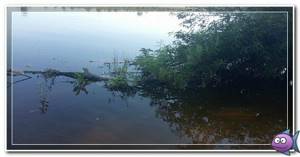
The best choice for catching fanged fish, of course, remains wide, deep rivers. Here it feeds on the so-called banks - areas with a hard sandy or rocky bottom and a depth of at least 3 meters. You can also catch it in flowing lakes and narrow rivers. In the latter, the predator stands on the stream, waiting for the next victim.
It should be noted that large individuals feed alone, while small and medium-sized pike perch practice school hunting for fry. It happens that from one point it is possible to catch several specimens at once, and the bites follow one after another.
Searching for pike perch in a pond
A little closer to the morning dawn, this fish should be looked for in all sorts of shallow areas of the reservoir; after the sun rises, the pike perch moves to deeper places. Pike perch can also be found in the river itself, exploring various areas of the reservoir with holes and snags in search of prey. August fishing for pike perch consists primarily of constantly finding the pike perch itself.
Small pike perch always gather in small schools and never move alone. But this fact does not apply to large representatives of pike perch; large pike perch move around the reservoir alone. Slightly rainy weather can be considered a good time to catch pike perch. When fishing for pike perch in August in unfamiliar waters, before fishing, you should look around and notice the places where local fishermen catch pike perch.
If you are going to catch pike perch at night, then in advance, during the day, you should set up a fishing spot so that there are no incidents during fishing at night.
Fishing time
Pike perch, like most other representatives of the ichthyofauna, has its own daily routine. According to him, in August this fish usually comes out to feed early in the morning and after sunset. During the daytime, bites are also possible, but, as a rule, they are rare and indistinct. Obeying instinct, the predator can only try the bait “by one tooth”, but does not swallow it in such a way as to properly detect it. Therefore, you shouldn’t count on a good catch during the day.
In cool, cloudy weather, the morning meal may last until lunch, and the evening meal may begin earlier than usual. Pike perch loves the cold and does not tolerate heat well. At a temperature that is comfortable for him, several good exits can occur in just the first half of the day, allowing him to return home with a decent catch.
Spinning fishing for pike perch in August
Spinning is the most effective tool for fishing for fanged fish in open water. Its main advantage is mobility. With a spinning rod, you can fish many promising spots both from the shore and from a boat in a short period of time. It is important that the tackle is assembled correctly. All its elements must be combined with each other and correspond to the fishing conditions. This set is suitable for pike perch.
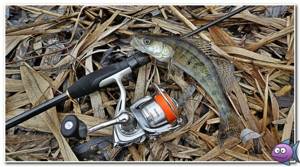
· Rod is 2.7 m long for shore fishing or 2.1 m long for fishing from a boat. Performance characteristics: class - medium, action - fast, test - 10-30 g. If you plan to catch pike perch with heavy baits from a long distance, the upper limit of the test can reach up to 40 g.
· The reel is a spinning reel with a 2500 or 3000 spool, which can accommodate a sufficient amount of cord. Basic requirements: no backlash, smooth running, high-quality laying of the braid, fine tuning of the friction brake, uninterrupted operation of all components of the mechanism.
· The main line is a braided cord with a cross-section from 0.14 to 0.20 mm. The diameter is selected taking into account the size of the pike perch that you plan to catch. If in the selected area the bottom surface is strewn with shells, it is better to use a thicker cord.
· Leash – necessary in cases where there is a possibility of a pike biting or the cord being cut due to the presence of sharp stones at the bottom. This element of equipment does not have to be metal; sometimes you can get by with fluorocarbon, which is invisible in water.
Catching pike perch with a spinning rod involves the use of various artificial baits. You can seduce him with a spinner, a spinner, a wobbler, or a mandula, but silicone baits mounted on a jig head or an eared weight + offset hook work best. Especially good for this type of fishing is edible silicone, which has the smell and taste of food familiar to predators. The size of silicone twisters and vibrating tails must correspond to the size of the object being fished. For example, for zander weighing up to 1 kg, baits 4-5 cm long are suitable.
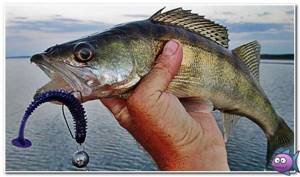
Spinning fishing is active fishing, which involves constant movement and search for fish. Fishing of a promising area begins from the near edges with a gradual increase in casting distance. As for wiring, each type of bait has its own animation options. Uniform wiring - for spinners and wobblers that do not have active play, jerking - for active wobblers, stepped (jigging) - for soft baits. The latter is considered the most effective in fishing for fanged fish using spinning tackle.
Tackle and bait
In August, pike perch is caught with many types of gear, using a wide variety of baits. Consider the following areas of fishing for pike perch:
- casting spinning;
- trolling;
- sheer luster;
- donka;
- live bait float rod;
- mugs and girders.
Fishing for pike perch in August using spinning rods is carried out using various baits, but jigs are still in the lead:
- loaded silicone;
- mandulas;
- foam fish.
Slightly worse results are given by heavy spinners, front-loaded spinners and deep-sea wobblers. When going to the river for pike-perch, you need to stock up on strong tackle, sharpened primarily for jigs. It is advisable to choose a spinning rod with a fast action and an elastic tip, which can help in cutting through the hard pike-perch mouth. Depending on the body of water, the test stick can be selected from medium-light, medium or medium-heavy.
Depending on the chosen rod, the reel and line are selected. The tackle must be balanced in weight; only under this condition will the spinning rod not overload and tire the angler’s hand during long-term fishing.
Pike perch are rarely caught purposefully by trolling. Most often, this method is used as terrain reconnaissance. After catching one or two decent specimens, the boat anchors, and fishing continues with a spinning rod and casting.
They catch pike perch by trolling with heavy baits:
- vibrators;
- cicada spoons;
- deep-sea wobblers minnows and cranks.
Stubborn heavy baits require the use of more powerful spinning rods. Most often these are short, powerful sticks with weights up to 60-80 grams, equipped with large coils and thick braid.
Plumb fishing
The sheer trolling of pike perch is somewhat akin to winter fishing from under the ice. Short, up to one meter long, fishing rods and vertical spoons with balancers are used. In this case, it is better to equip fishing rods with spinning reels with monofilament fishing line to absorb the jerks of large fish.
The following baits are used for this kind of fishing:
- vertical winter lures;
- tube spoons;
- cicadas;
- rattlins;
- balancers.
Fishing is done like this:
- The boat slowly drifts with the current on the river, under the influence of the wind or from the operation of the oars on the reservoir.
- Fishermen, using methodical strokes, as in winter fishing, fish the bottom zone.
- When biting, the fish is forced to land.
Donks for catching pike perch are equipped on the basis of feeder or spinning rods of the “Crocodile” type. They are equipped with powerful reels that can accommodate a large amount of fishing line, because casting has to be done at respectful distances.
It is better to use a combined fishing line:
- the main one is braided: with a diameter of 0.12-0.14 millimeters;
- shock leader made of monofilament: 0.25-0.30;
- leader - fluorocarbon: 0.18-0.20.
Animal components are used as bait for donk when fishing for pike perch:
- worms;
- fish cutting;
- leeches;
- barley shell meat;
- dead fish - tackle.
But the main bait for pike perch is live fry. As such they use:
Some anglers use bait when catching pike perch with live bait. To do this, various meat and fish components are mixed with the soil of the river bank:
- animal blood;
- crustaceans;
- fish cutting;
- chopped shrimp;
- chopped shellfish.
Float live bait
If the river flow is not very fast or the fishing is carried out in a reservoir, you can catch pike perch with live bait using a float. To build the tackle, take a fishing rod from three and a half to five meters long and equip it with a reliable inertia-free reel and monofilament fishing line with a diameter of 0.20-0.28 millimeters.
A sliding float is mounted on the fishing line, which is easier to use in deep water and can withstand the resistance of the chosen baitfish. The float is loaded in such a way that after baiting the fry it goes deep along the waterline.
A carabiner is attached to the end of the working line to attach the leash. It is made of fluorocarbon, Kevlar, or metal if there is a possibility of a pike bite.
When fishing, the tackle is installed so that the live bait floats at a distance of 40-60 centimeters above the bottom. It is in this horizon that pike perch most often hunts.
Pike perch are caught with circles both in relatively stagnant bodies of water, such as reservoirs, and in rivers with a pronounced current. Depending on the presence of a stream, the fishing tactics with this gear are slightly different.
The hooks are equipped in the same way as the usual piers:
- a strong cord or fishing line is wound around the disk;
- an undergrowth made of monofilament with a thickness of 0.25-0.30 millimeters is installed;
- a sliding weight is placed on the monofilament;
- A leash made of fluorocarbon or metal is tied if there are pikes.
Catching pike perch in August on donka
Bottom tackle has two undeniable advantages. The first is the location of the bait on the bottom or in close proximity to it, where, in fact, the pike perch spends most of its life. The second is the use of natural food as bait, for example, live bait.
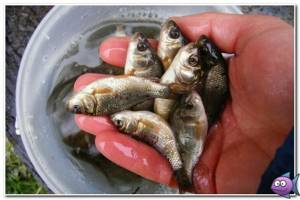
All elements of the donkey for catching fanged fish must be strong and reliable; such fishing does not require delicacy. The tackle usually consists of:
- a rigid feeder rod with an upper test limit of 50-60 g and a length of at least 2.7 meters (the longer the “stick”, the farther it throws);
- a power inertia-free coil with a low gear ratio (as an option, you can use an inertial type “Nevskoy”);
- monofilament fishing line with a diameter of 0.30 mm and thicker;
- a lead sinker capable of holding the rig in the current in the chosen location;
- one or two removable leashes slightly thinner than the main line (recommended length - 50 cm, material - fluorocarbon);
- high-quality hooks with a long shank (suitable numbers are 8, 9 and 10 according to the domestic classification).
Live bait deservedly occupies the first place in the list of baits for fishing pike perch on a donk, but not every fish is suitable for this role. Nature has deprived our predator of the opportunity to feed on wide-bodied objects, so it is necessary to choose fish with a narrow body. It could be a spined lance, a gudgeon, a bleak, a goby or a miniature pike of the year. It is important that the live bait attached to the hook remains mobile, since pike perch, unlike catfish, is not interested in sleeping fish. The freshness of food is of paramount importance to him. To keep the fish alive and active for a long time, it is advisable to bait it by piercing the hook under the dorsal fin.
Worms are another catchable bait. Especially if there is a whole bunch of them, they move together, wriggle around the forearm and thereby attract a predator. Unfortunately, such a delicacy does not go unnoticed by other fish. Often they are quickly eaten by small things; they may be pecked by a perch or a modest-sized wren, which in the fishing community is called a tadpole. Pike perch simply cannot keep up with other hungry inhabitants of the reservoir.
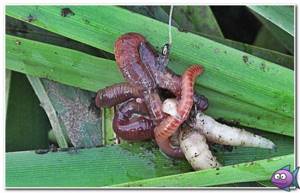
When catching pike perch on a donk, several tactical points should be taken into account. For example, you should not cast the tackle in places where baitfish can hide: bury themselves in silt, get entangled in thickets of vegetation, or “dive” under a flooded snag. Sometimes it is useful to move it a little, thanks to this technique the bite is enlivened. In addition, it is necessary to constantly monitor the tip of the rod in order to make a timely hook. For this reason, it is not recommended to use a large number of donks; this leads to an increase in the number of unrealized bites.
Fishing methods
Catching pike perch using live bait with a sliding sinker.
Catching walleye with live bait is the preferred method of fishing. By using the fishing method with a sliding sinker, we eliminate the resistance of the bait at the moment the pike perch attacks. Pike perch, as is known, mainly attacks the prey at the moment of rising from the bottom or simply upward. As soon as he feels resistance, he immediately throws the bait. The sliding sinker eliminates resistance, and when the pike perch hits the bait, it, without feeling the resistance of the prey, swims some distance to turn it over in its mouth.
The sliding sinker system consists of three components, the hook, the olive sinker with a hole along the entire length and the stopper. They can be purchased ahead of time at most fishing stores, or you can make your own. When you cast a bait, the sinker quickly pulls it to the bottom. The live bait begins to rise upward, but the sinker remains at the bottom. It does not create resistance when the pike perch grabs the bait.
The sinker is the most important component; it must be heavy enough to get the bait to the bottom quickly. Most anglers use oval or flat weights. Of course, it is better to use conical ones; they pass through vegetation better and do not get caught. For hooks, the smaller the size, the better - a size 6-8 treble will be just right.
Catching pike perch with spinners.
Fishing with spinner spoons for walleyes is one of the oldest methods of catching perch. Now there is a very large selection of such spinners. Preference should be given to those that imitate the movement of small fish. The colors are dominated by silver tones, imitating bleak, perch and other similar fish.
MERPS spinners called Aglia, Aglia Long and Comef or models similar to them have proven themselves well. Pike perch are also caught well with small wobblers. The color must be chosen based on the state of water transparency. The more opaque the water, the brighter the bait should be.
Catching pike perch by trolling.
Trolling for walleyes has been and continues to be an effective way to catch trophy fish, especially in unfamiliar waters. Trolling allows you to cover a large amount of water with minimal time. Today, for catching pike perch by trolling, various options are offered in the presentation of bait.
The first and most common mistake anglers make is noise, whether it's dropping the anchor, starting the outboard motor where you want to fish, accidentally knocking in the boat while fishing, or drilling holes in the ice. For effective fishing, particularly trolling for walleye, it is ideal to use a boat with an electric motor, and lower the anchor with the utmost care, and only when necessary. Don't forget, large pike perch is a very cautious fish. At the slightest noise, it quickly goes into the depths and during this day may not go out hunting at all.
Fishing for pike perch on rivers.
Throughout the walleye catch statistics, you will see that many of them were caught in rivers. Catching pike perch on the river is an excellent choice and catching trophies for two reasons, first: rivers do not have such pressure from anglers and fishing pressure as on lakes, secondly: on rivers there is not such a strong change in water temperatures, and the oxygen balance is much better. If you are going to go to the river to fish for walleye, there are two main factors to increase your catch. You need to be aware of current speed and water level fluctuations and how they both affect the feeding behavior of pike perch.
When developing a strategy for catching walleye on rivers, you may want to reduce the number of river sections because the current is too strong. Walleyes tolerate some current, but rarely will you find them in fast water; they require a certain type of current, the presence of islands, bridge abutments, large rock formations and boulders, or sunken trees. This is important for locating river valleys, finding structure and fish downstream along the boundary between still and moving water. In such places, pike perch spends all its time resting, sometimes leaving it to search for food.
Other successful locations are dams or other water obstructions that form eddies, providing flow breaks for both downstream and upstream. Many anglers do not understand this and try to catch pike perch in open currents. Bays and deep holes are also good for locating and catching walleye on the river.
Fishing for pike perch in lakes.
There are good and better times for catching pike perch on rivers; the most experienced anglers prefer fishing for pike perch in lakes. If the water in the lake is clear, the location of the pike perch is very predictable, it concentrates in well-known places. An increase in the water level from winter thaws or heavy rains in the lake can also be for successful fishing for pike perch. During this period, pike perch often moves to search for food, looking for the warmest places. It may remain at depth until the water rises or stabilizes. Once they feel the level has risen, they will move to shallower water to feed. Almost all methods and tactics for catching pike perch on the river will also work for catching pike perch in lakes.
Catching pike perch in August using float tackle
A fishing rod with a float performs best when fishing for predators from steep, steep banks. It is in such areas, where the depth begins almost from the coastal edge, that a flock of pike perch likes to stand. You can successfully catch them with float gear that includes the following elements:
- Bolognese rod with guides 5-6 meters long;
- spinning reel 2000, 2500;
- monofilament with a cross-section from 0.25 to 0.35 mm;
- sliding float with a carrying capacity corresponding to the size of the live bait and the weight of the load;
- several weights capable of holding the bait in the current;
- leash up to 50 cm long;
- single hook No. 8-10.
It is advisable to choose a place with a slow current, sufficient depth and a hard bottom. For example, at a sharp turn in the river, where the stream hits the bank and creates a return flow. Live bait can be placed behind both lips or under the dorsal fin. According to many experienced court judges, the second method is better. The tackle is adjusted in such a way that after casting the fish is above the bottom surface at a height of 25-30 cm.
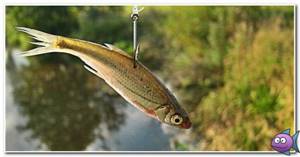
Spinning rod equipment for pike perch
It is better to equip a spinning rod for casting pike perch with a spinning reel or a multiplier casting reel. But fishing with a baitcasting reel is more difficult, since if the settings are not correct and without experience in use, when casting, there is a high probability of a beard appearing on the reel, and then a long and tedious unraveling of the fishing line. And it is also necessary to take into account that a good quality multiplier casting reel is much more expensive than a spinning reel.
It is better to choose a spinning reel that is also durable and of high quality, size 2000-4000, depending on the test of the spinning rod and the bait. To equip the reel, you can wind a fishing line with a diameter of 0.27-0.35 mm or a cord 0.8-1.2 (0.14-0.20 mm thick), whatever is convenient for you and always taking into account the characteristics of the fishing rod.
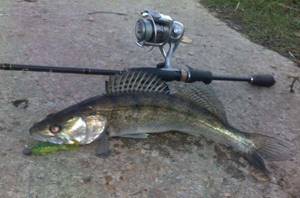
It is better to fasten the bait to a fishing line or cord using a metal leash with a clasp. It is preferable to use a titanium leash, without memory, 15-20 cm long. Because when casting, a pike can bite and cut off your favorite and expensive wobbler or spinner with its teeth. And be sure to remember to install a swivel between the fishing line and the leash.
Useful tips
- If you are hooked on a small or medium-sized zander, then most likely he is not alone here. In order not to scare away the rest of the pack, you need to take him out as quickly as possible.
- Unlike pike, the fanged one does not ambush. As a rule, it moves along the edge of an edge or slope, looking out for prey. That is, the predator is in constant motion. This means that the angler also needs to move more, without stopping at those points where there have been no bites for 15-20 minutes.
- Pike perch is not fed like bream or carp, but you can resort to one little trick. If you feed small fish with porridge, predators will quickly follow it. It is quite possible that the pike perch will approach first.
